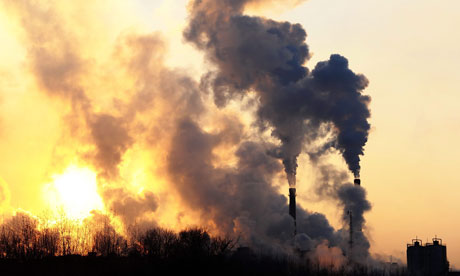 Actor Mark Ruffalo, an outspoken and longtime opponent of shale gas fracking who is in southwestern Pennsylvania to work on a movie, said lawsuit settlements that prevent those involved from discussing their problems are "un-American" and infringe on the public's need to know about drilling impacts that could damage human health and the environment.
Actor Mark Ruffalo, an outspoken and longtime opponent of shale gas fracking who is in southwestern Pennsylvania to work on a movie, said lawsuit settlements that prevent those involved from discussing their problems are "un-American" and infringe on the public's need to know about drilling impacts that could damage human health and the environment.
During a break in shooting scenes in Washington County last week for the movie "Fair Hill Project," Mr. Ruffalo met privately with Stephanie Hallowich, a onetime anti-fracking activist. She has been silenced by a nondisclosure agreement contained in the August 2011 settlement of a civil lawsuit against Range Resources, MarkWest Energy Partners and Williams Gas/Laurel Mountain Midstream Partners, that claimed drilling operations around her family's farm in Mount Pleasant, Washington County, had harmed their health and property value.
Mark Ruffalo to PG: Gas industry hiding behind non-disclosure deals
At the edge of the carbon cliff
 The most important number in history is now the annual measure of carbon emissions. That number reveals humanity's steady billion-tonne by billion-tonne march to the edge of the carbon cliff, beyond which scientists warn lies a fateful fall to catastrophic climate change.
The most important number in history is now the annual measure of carbon emissions. That number reveals humanity's steady billion-tonne by billion-tonne march to the edge of the carbon cliff, beyond which scientists warn lies a fateful fall to catastrophic climate change.
With the global total of climate-disrupting emissions likely to come in at around 52 gigatonnes (billion metric tonnes) this year, we're already at the edge, according to new research.
Five Fatal Flaws in California's New Fracking Regulations
Proposed regulations meant to govern fracking in California would do little to protect the state's environment, wildlife, climate and public health, according to an analysis by the Center for Biological Diversity. Fracking — currently unmonitored in California — uses huge volumes of water mixed with dangerous chemicals to blast open rock formations and extract oil and gas.
Hundreds of wells have been fracked in California in recent years. Today's draft proposal by California's Division of Oil, Gas, and Geothermal Resources was supposed to be the first step in explicitly regulating this controversial practice.
Toxic Train Wreck Exposes Weakness in Federal Chemical Policy
 In late November, while other parts of New Jersey were recovering from the superstorm, the quiet town of Paulsboro was blindsided by a very unnatural disaster. A train derailed while crossing a local bridge, sending freight cars tumbling into the water below and releasing a toxic swirl of the flammable gas known as vinyl chloride, used to make PVC plastics.
In late November, while other parts of New Jersey were recovering from the superstorm, the quiet town of Paulsboro was blindsided by a very unnatural disaster. A train derailed while crossing a local bridge, sending freight cars tumbling into the water below and releasing a toxic swirl of the flammable gas known as vinyl chloride, used to make PVC plastics.
In the following days, chaos ensued as residents hurriedly evacuated. Authorities struggled to manage the emergency response, leaving people confused and frustrated by a lack of official communication about hazards.
Ivory sales must stop or Africa's elephants could soon be extinct, says Jane Goodall
 Jane Goodall, one of the world's greatest conservationists, has made an impassioned plea for a worldwide ban on the sale of ivory to prevent the extinction of the African elephant.
Jane Goodall, one of the world's greatest conservationists, has made an impassioned plea for a worldwide ban on the sale of ivory to prevent the extinction of the African elephant.
Her call follows the seizure in Malaysia last week of 24 tonnes of illegal ivory and a report by conservationists warning that the illegal ivory trade now threatens governments as rebel groups use the sale of tusks to fund their wars.
Peru’s natural gas project sparks worry for Amazon’s isolated tribes
Peru’s main indigenous group said on Wednesday it will ask the courts to halt an expansion of the country’s largest natural gas field over concerns that new drilling will harm isolated tribes.
Aidesep (the National Association of Amazon Indians in Peru), wants to overturn the regulatory approval issued in April for a $70-million project by the Camisea gas consortium in an oil block that overlaps an indigenous reserve.
Regulators Under Fire for Keeping Fracking Pollution Test Results Under Wraps
 Residents living in the shadow of fracking rigs say they've suffered from headaches, nosebleeds and other health effects since drilling began in their communities. Meanwhile, state agencies refuse to release the results of air and water pollution tests.
Residents living in the shadow of fracking rigs say they've suffered from headaches, nosebleeds and other health effects since drilling began in their communities. Meanwhile, state agencies refuse to release the results of air and water pollution tests.
Thirty years ago, Jenny and Tom Lisak moved into a historic farmhouse in Pennsylvania's rural Jefferson County. The couple raised three children there and established a certified organic farm they named LadyBug Farm.
More Articles...
Page 81 of 200

 Environmental Glance
Environmental Glance






























